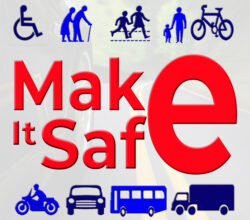Advice and guidance for travelling with children
Information on safety standards and the law, travelling with children and child seat safety.
Ensuring a Safer Child Passenger Experience
 As a responsible parent or guardian, it is crucial to prioritize the safety of your child when travelling in a vehicle. Taking the necessary precautions and using appropriate safety measures can significantly reduce the risk of injuries in the event of an accident. Here are some guidelines to ensure a safer child passenger experience:
As a responsible parent or guardian, it is crucial to prioritize the safety of your child when travelling in a vehicle. Taking the necessary precautions and using appropriate safety measures can significantly reduce the risk of injuries in the event of an accident. Here are some guidelines to ensure a safer child passenger experience:
1. Use Appropriate Child Restraint Systems:
- Infants: For newborns and infants, use a rear-facing infant car seat. Make sure it is correctly installed according to the manufacturer’s instructions and secured tightly in the vehicle.
- Toddlers and Pre-schoolers: Transition to a forward-facing car seat with a harness once your child outgrows the rear-facing seat. Again, ensure proper installation and secure harness fit.
- School-Age Children: When your child exceeds the weight and height limits for a forward-facing seat, it’s time to switch to a booster seat. Use a high-back or backless booster seat, depending on your child’s size and vehicle specifications.
- Seatbelt Use: Once your child reaches the appropriate height and weight requirements, they can transition to using the vehicle’s seatbelt alone. Ensure that the seatbelt fits properly—lap belt low across the hips and shoulder belt crossing the middle of the chest.
2. Select the Right Car Seat for Your Child: Choose a car seat that fits your child’s age, weight, and height. Consider their growth patterns and select a seat that allows for adjustment as they grow. Check the car seat’s label and follow the manufacturer’s guidelines to ensure it is appropriate for your child’s size.
3. Properly Install Car Seats: Incorrect installation of car seats can diminish their effectiveness in protecting your child. Read the car seat manual and the vehicle’s owner manual carefully. Use either the vehicle’s seat belt or the Lower Anchors and Tethers for Children (LATCH) system to secure the car seat. Ensure a tight and secure fit without excessive movement.
4. Positioning of Car Seats: Place rear-facing car seats in the backseat of the vehicle. Rear-facing is the safest position for infants and young children. If using a forward-facing seat or booster seat, also position it in the backseat, preferably in the middle. This positioning offers the best protection in the event of a collision.
5. Regularly Inspect Car Seats: Periodically inspect the condition of your child’s car seat. Check for any signs of wear, tear, or damage. Ensure that all parts, including straps, buckles, and harnesses, are in good working condition. If a car seat has been involved in a crash, replace it, even if there is no visible damage.
6. Avoid Bulky Clothing: Do not dress your child in bulky clothing or place blankets between the child and the car seat harness. These can compress during a collision, leaving the harness too loose to properly restrain the child. Use thin layers and cover the child with a blanket or coat after securing them in the car seat.
7. Lead by Example: Set a good example by always wearing your seatbelt. Make it a habit for everyone in the vehicle to buckle up before starting the journey. Children are more likely to follow safety practices when they see adults consistently using seatbelts.
8. Educate Caregivers and Family Members: Ensure that all caregivers, including family members, babysitters, and grandparents, are aware of proper car seat usage and installation. Provide them with instructions on how to use the car seat correctly to ensure consistency in your child’s safety.
9. Stay Updated with Safety Guidelines: Stay informed about the latest safety guidelines, recalls, and advancements in child passenger safety. Regularly check for updates from reliable sources BLA.
Remember, protecting your child during car journeys is a crucial responsibility. By using appropriate child restraints, following safety guidelines, and providing a safe and secure environment, you can significantly reduce the risk of injuries and ensure a safer child passenger experience.
![]()
